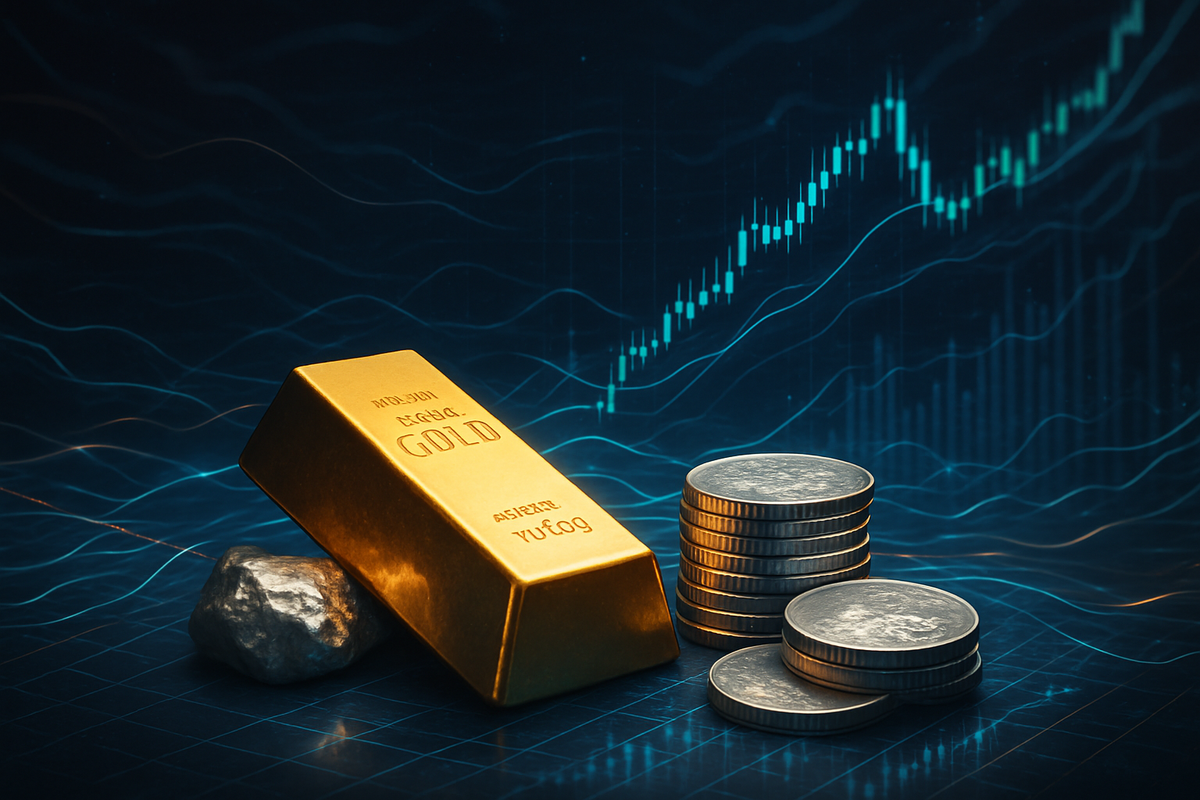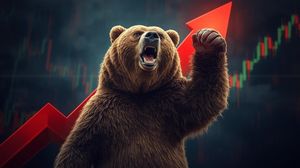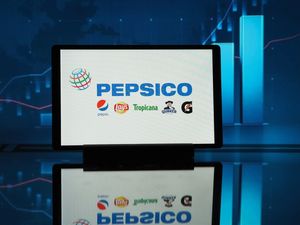
Chicago, IL – October 10, 2025 – The global financial markets were abuzz yesterday, October 9, 2025, as CME Group (NASDAQ: CME) announced a monumental achievement: its metals complex recorded an all-time daily trading volume of 2,148,990 contracts. This unprecedented surge, occurring just one day prior to the current date, signals an intense period of market activity and underscores the potential for significant volatility within the metals sector. The record, which surpassed the previous high by a staggering 24%, highlights how investors and institutions are increasingly turning to metals derivatives to navigate a world grappling with profound geopolitical and macroeconomic shifts.
The immediate implication of this record-breaking volume is a clear indication of heightened market participation and a compelling need for risk management among global clients. Jin Hennig, Managing Director and Global Head of Metals at CME Group, emphasized that clients are utilizing metals futures and options to adjust their exposure and hedge against an environment of pervasive uncertainty. This surge in trading activity, particularly in precious metals, suggests that market participants are actively positioning themselves in response to a complex global landscape, setting the stage for potentially dynamic price movements in the coming months.
Unpacking the Record Surge: Gold and Silver Lead the Charge
The historic trading volume on October 9, 2025, was largely propelled by a significant increase in precious metals products, with gold and silver futures and options taking center stage. The total metals complex volume reached 2,148,990 contracts, a robust 24% increase over the prior record set on April 12, 2024. Within this, metals futures alone accounted for a record 1,877,878 contracts.
Specific details highlight the breadth of this activity: Micro Gold futures recorded an impressive 741,822 contracts, while Micro Silver futures also saw a record 132,584 contracts traded, alongside a record open interest of 18,276 contracts. The newly launched 1-Ounce Gold futures, designed to enhance retail participation, also performed exceptionally, registering a record 77,946 contracts. Furthermore, Gold Weekly options saw a record 70,496 contracts traded and a record open interest of 100,650 contracts. These figures collectively underscore a broad-based engagement across various contract sizes and types, reflecting a diverse range of market participants seeking exposure or hedging opportunities.
The timeline leading up to this record reveals a pattern of increasing activity driven by global instability. The previous metals complex record of 1,728,362 contracts was set on April 12, 2024, also attributed to "shifting geopolitical conditions." Prior to that, a record of 1,670,920 contracts was established on February 28, 2020. More recently, on May 29, 2025, CME Group's battery metals complex experienced a record trading volume, signaling a broader trend of heightened interest across the entire metals spectrum. This consistent upward trajectory in trading volumes points to an enduring environment of uncertainty that is driving participants into the metals market. Key players in this scenario are primarily CME Group itself, providing the platform and infrastructure, and Jin Hennig, whose insights frame the market's response to geopolitical and macroeconomic shifts. The vast array of institutional and retail clients globally constitute the primary stakeholders, actively engaging with these derivatives for risk management and speculative purposes.
Corporate Fortunes in Flux: Winners and Losers in the Volatile Metals Market
The surge in metals trading volume and the accompanying volatility will inevitably create a landscape of winners and losers among public companies. The direct beneficiaries are often those involved in the extraction and production of precious metals, while industrial users may face increased costs.
Potential Winners:
- Mining Companies (Gold and Silver): Major gold producers such as Newmont Corporation (NYSE: NEM) and Barrick Gold Corporation (NYSE: GOLD) are poised to gain significantly. Higher gold prices directly translate to increased revenue and expanded profit margins, as their production costs are relatively fixed. Similarly, major silver producers like Pan American Silver Corp. (NASDAQ: PAAS), First Majestic Silver Corp. (NYSE: AG), and Wheaton Precious Metals Corp. (NYSE: WPM) will see their revenues boosted by rising silver prices. Companies with low production costs and strong balance sheets are best positioned to capitalize.
- Precious Metals Streaming and Royalty Companies: Firms like Wheaton Precious Metals Corp. (NYSE: WPM) and Royal Gold Inc. (NASDAQ: RGLD) benefit immensely. They provide upfront financing to miners in exchange for future production at fixed, low prices or a percentage of revenue. As metal prices climb, their margins expand without incurring direct operational mining risks.
- Exchanges and Brokerage Firms: CME Group (NASDAQ: CME) itself is a primary beneficiary, profiting from increased trading volume through higher commissions and fees. Other exchanges and brokerage firms that facilitate commodity trading will also see a boost in transaction-based revenue.
- Asset Managers with Precious Metals Funds/ETFs: Firms managing gold and silver ETFs (e.g., iShares Silver Trust, NYSE: SLV) or commodity-focused mutual funds will likely experience increased inflows and assets under management, leading to higher management fees.
Potential Losers:
- Industrial Users of Metals: Companies heavily reliant on silver as an input, such as electronics manufacturers and solar panel producers like First Solar (NASDAQ: FSLR), could face rising raw material costs. Silver's significant industrial demand (nearly 60% of total production) means that price volatility directly impacts their cost of goods sold, potentially squeezing profit margins if they cannot pass on these costs.
- Jewelry Manufacturers and Other Producers of Finished Goods: Businesses where gold and silver are key components will face higher input costs. Without strong hedging strategies or pricing power, their profitability could suffer.
- Companies with Poor Hedging Strategies: In a highly volatile market, companies across the spectrum—from miners to industrial users—that fail to implement or execute effective hedging strategies could face substantial losses if prices move unfavorably.
- Hedge Funds and Speculators with Incorrect Positions: While volatility creates opportunities, it also amplifies risks. Hedge funds or proprietary trading firms that take incorrect directional bets or have insufficient risk management in a rapidly moving market could incur significant losses.
The record trading volume underscores a market environment where strategic positioning, robust hedging, and efficient operations will be critical determinants of corporate success.
A Broader Canvas: Significance in the Global Economic Tapestry
CME Group’s record metals complex trading volume on October 9, 2025, is not an isolated event but a significant indicator reflecting and amplifying several broader industry trends within the global economic landscape. This surge highlights the increasing role of derivatives in navigating complex market dynamics and signifies a shift towards more active risk management.
Firstly, the record volume is deeply intertwined with geopolitical volatility and risk management. In an era marked by trade disputes, regional conflicts, and evolving international relations, precious metals like gold and silver traditionally serve as "safe-haven" assets. The heightened trading activity suggests that market participants are actively hedging against these uncertainties, seeking to protect portfolios from potential economic shocks. This trend is further supported by central banks globally, which have been observed increasing their gold reserves to diversify assets and hedge against systemic risks and currency devaluation.
Secondly, the event speaks to the ongoing challenges and adaptations within global supply chains. Disruptions stemming from geopolitical tensions, environmental factors, and logistics bottlenecks have created significant price volatility in the metals sector. The increased use of derivatives allows companies to secure future pricing and manage inventory risks more effectively, ensuring greater supply chain resilience. This is particularly relevant for industrial metals, where supply chain stability directly impacts manufacturing and development.
Thirdly, the record aligns with the accelerating energy transition and the demand for "green metals." While the recent surge was primarily in precious metals, previous records in battery metals (like lithium and cobalt) indicate a broader trend. The global push for electric vehicles and renewable energy infrastructure is creating unprecedented demand for critical minerals. Volatility in these green metals, driven by supply constraints and geopolitical competition for resources, will likely continue to fuel high trading volumes as industries manage their exposure.
In terms of ripple effects on competitors and partners, CME Group's record could intensify competition among global commodity exchanges. Rivals such as the London Metal Exchange (LME) and Intercontinental Exchange (NYSE: ICE) will likely face pressure to enhance their metals offerings, liquidity, and technological infrastructure to retain and attract market participants. For partners like brokers, clearing houses (e.g., CME Clearing), and market data providers, increased trading volume directly translates to higher fees and demand for their services, potentially spurring further investment in robust infrastructure.
From a regulatory and policy perspective, sustained high trading volumes, particularly if accompanied by significant price volatility, will undoubtedly draw increased scrutiny from regulatory bodies such as the Commodity Futures Trading Commission (CFTC). Regulators may intensify monitoring for market manipulation, review position limits to prevent excessive speculation, and call for enhanced transparency in reporting requirements. The LME's nickel crisis in 2022 serves as a stark historical precedent, demonstrating how extreme volatility and concentrated positions can lead to market suspensions and calls for rigorous regulatory oversight and market modernization. Such events underscore the critical need for robust risk management and clear regulatory frameworks in high-stakes commodity markets.
Navigating the Future: What Lies Ahead for the Metals Market
The record-breaking trading volume in CME Group's metals complex marks a pivotal moment, ushering in a period of intense focus on the future trajectory of the metals market. Both short-term adjustments and long-term structural shifts are anticipated, demanding strategic adaptations from all market participants.
In the short-term, the metals market is likely to experience continued volatility, potentially punctuated by price corrections. While bullish sentiment for precious metals remains strong, analysts suggest that a 10-15% pullback in gold prices would be a "healthy" adjustment after its recent rally. A period of consolidation, where prices trade within a tighter range near current elevated levels, is also a probable scenario, allowing the market to absorb recent gains and build a base for future movements. Notably, an unusual price differential between London spot silver and COMEX futures has created arbitrage opportunities, indicating acute physical tightness in the London bullion market and prompting physical flows of silver. This dynamic highlights the immediate complexities and opportunities emerging from the current market conditions.
Looking at the long-term, the outlook for precious metals, especially gold, appears predominantly bullish. Forecasts from institutions like J.P. Morgan and Goldman Sachs project gold prices to continue their upward trend, potentially reaching $4,000/oz by mid-2026 and even exceeding $5,000 by 2027, driven by de-dollarization efforts, increasing central bank gold reserves, and its enduring role as a hedge against systemic risks. Silver is also expected to see sustained demand, particularly from the solar energy and electronics industries, with some long-term projections suggesting prices could reach $100 or even $200 per ounce. Beyond precious metals, the energy transition will continue to fuel robust demand for battery metals like lithium, cobalt, and copper, with supply constraints and geopolitical risks ensuring their sustained importance.
Strategic pivots and adaptations will be crucial. Investors should consider diversifying portfolios with gold (up to 15% by some expert recommendations) and viewing price corrections as buying opportunities. Central banks are expected to continue their aggressive gold accumulation. For the mining industry, investments in operational efficiency, sustainable practices, and strategic exploration will be paramount to maximize output and navigate increasing regulatory and geopolitical risks. Industrial users, especially those reliant on silver, must focus on supply chain resilience through strategic stockpiling, forward contracts, and innovation to reduce metal content where feasible.
Market opportunities include the reinforced role of precious metals as safe havens, the growth of the battery metals market, and increased retail access through smaller contract sizes. However, challenges abound, including the risk of sharp corrections, supply chain vulnerabilities due to concentrated production, and geopolitical headwinds. Potential scenarios range from a "melt-up" followed by a sharp correction (a "blow-off top") to a sustained structural bull market driven by fundamental factors. Ultimately, market participants must remain vigilant, adapt swiftly to evolving dynamics, and closely monitor geopolitical developments, central bank policies, and supply-demand fundamentals to capitalize on opportunities and mitigate risks in this highly dynamic metals market.
The Enduring Impact: A Market Transformed
The CME Group's record metals complex trading volume on October 9, 2025, marks a watershed moment, underscoring the metals market's critical role in the contemporary global financial landscape. This unprecedented activity is not merely a statistical anomaly but a profound indicator of heightened market sensitivity to a confluence of geopolitical uncertainties, macroeconomic shifts, and evolving industrial demands.
The key takeaway is that the metals market is currently a hotbed of activity, reflecting a collective response to global instability. Investors are increasingly seeking the perceived safety and inflation-hedging properties of precious metals, while industrial demand for critical minerals continues its upward trajectory driven by the energy transition. This dual demand creates a complex, yet dynamic, environment where both speculative interest and genuine hedging needs are driving volumes to historic highs. The increased liquidity and participation, while offering opportunities for efficient price discovery, also amplify the potential for significant price swings, necessitating a disciplined approach to risk management.
Moving forward, the market is poised for continued dynamism. While short-term volatility and potential corrections are anticipated, the underlying structural drivers for both precious and industrial metals suggest a long-term bullish trend. The role of derivatives, as facilitated by CME Group, will remain crucial for managing exposure and navigating this intricate environment. The event also reinforces the need for regulatory vigilance to ensure market integrity and stability amidst increased activity.
Investors should closely watch several key indicators in the coming months: further geopolitical developments, central bank policies (particularly regarding interest rates and gold accumulation), and the ongoing supply-demand dynamics for both precious and industrial metals. The performance of mining companies (e.g., Newmont, Barrick Gold), streaming companies (e.g., Wheaton Precious Metals), and key industrial users will provide valuable insights into how different sectors are adapting to this new era of elevated metals market activity. The record volume serves as a potent reminder that in times of global flux, the ancient allure and modern utility of metals continue to command significant attention and capital.
This content is intended for informational purposes only and is not financial advice







